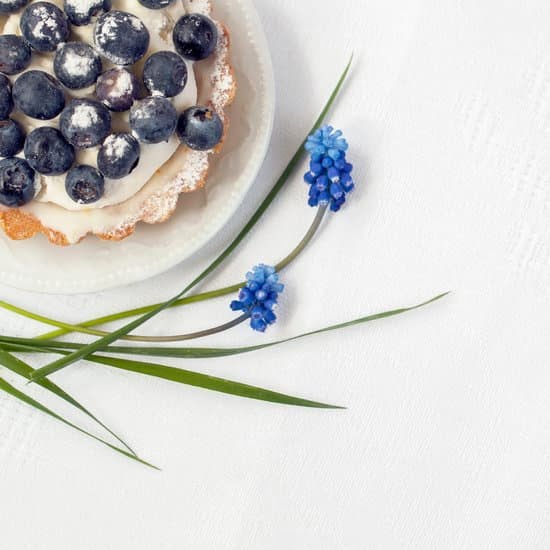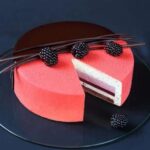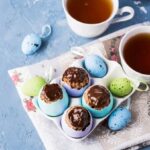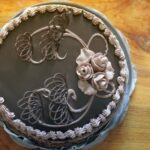Are you curious about how to decorate cakes with flowers? Incorporating fresh blooms into cake decorating can add an element of beauty and elegance that elevates the overall design. From selecting the right flowers to understanding proper techniques, this article will provide a comprehensive guide to creating stunning floral cake decorations.
When it comes to selecting the right flowers for cake decorating, it’s important to understand which types are safe and suitable for use as decorations. Not all flowers are suitable for consumption, so knowing how to properly identify and select flowers is crucial for ensuring both the aesthetic appeal and safety of the decorated cake.
In addition to selecting the right flowers, preparing fresh blooms for cake decorating is also essential. Properly cleaning and preparing flowers ensures that they are safe for consumption and that they will maintain their freshness when placed on the cake.
Whether it’s through cascading designs or floral wreaths, mastering different decorating techniques can take your cake creations to the next level. Stay tuned as we delve into step-by-step instructions for arranging and attaching flowers to cakes in various ways.
Selecting the Right Flowers
When it comes to decorating cakes with flowers, one of the most important considerations is selecting the right flowers. Not all flowers are safe for use as cake decorations, and certain types may pose a health risk if consumed. Therefore, it is crucial to understand which types of flowers are suitable for use on cakes.
Safe and Edible Flowers
Edible flowers are the safest option for decorating cakes. Some common edible flowers include roses, violets, pansies, and lavender. These flowers are not only safe for consumption but also add a delightful flavor and aroma to the cake.
Avoid Toxic Flowers
It is essential to avoid using toxic or poisonous flowers as cake decorations. Flowers such as daffodils, hyacinths, oleander, and lily of the valley are toxic and should never be used on cakes. Even if these flowers are purely for decorative purposes and will not be eaten, there is still a risk of contamination if they come into contact with the cake.
Consulting With Florists
If you are unsure about which flowers are safe for use on cakes, it is best to consult with a florist or a knowledgeable professional who can provide guidance on selecting the right types of flowers. They can also advise on any potential concerns related to allergies or sensitivities that may arise from certain flower varieties.
By understanding which types of flowers are safe and suitable for use as cake decorations, you can ensure that your floral-adorned cakes not only look beautiful but are also safe for consumption.
Preparing Fresh Flowers for Cake Decorating
When it comes to decorating cakes with flowers, it is important to properly clean and prepare the fresh blooms before they are used as cake decorations. Using flowers on cakes can add a touch of natural elegance and beauty, but it is crucial to follow proper techniques to ensure that they are safe for consumption.
Here are some tips and techniques for preparing fresh flowers for cake decorating:
- Choose organic or pesticide-free flowers to avoid any potential harmful chemicals on the blooms.
- Gently wash the flowers to remove any dirt, bugs, or pollen using a delicate spray of water. Be sure to handle the flowers with care to avoid damage.
- Remove any unwanted parts of the flower such as thorns, stems, and pistils. Only use the petals or florets for cake decorations.
Properly preparing fresh flowers is essential in ensuring that they are safe for consumption and will not affect the overall taste and quality of the cake. By following these tips and techniques, you can confidently use flowers as stunning decorative elements for your cakes.
Remember that not all types of flowers are suitable for use on cakes, so be sure to research which ones are safe and edible before incorporating them into your cake designs. With proper preparation, you can create beautiful floral arrangements that will elevate the look of your cakes.
Decorating Techniques
Cascading Designs
When it comes to decorating cakes with flowers, one popular and visually stunning technique is creating cascading designs. This involves arranging flowers in a way that they appear to cascade down the side of the cake, creating a whimsical and romantic look. To achieve this effect, start by selecting a variety of flowers in different sizes and colors. Choose flowers with long, flexible stems that can be easily arranged to drape gracefully down the side of the cake.
Once you have selected your flowers, trim the stems to varying lengths to create a natural and organic look. Then, starting at the top of the cake, begin attaching the flowers using floral wire or toothpicks. Secure each stem at an angle so that it gently cascades down the side of the cake. Be sure to leave some space between each flower cluster to allow for an airy and effortless appearance.
Floral Wreaths
Another beautiful way to decorate cakes with flowers is by creating floral wreaths. This technique involves arranging flowers in a circular pattern on top of the cake, resembling a traditional wreath. To create a floral wreath, select a mix of small blooms and greenery that can be easily arranged in a circular shape without overwhelming the cake.
Start by creating a base for your wreath using sturdy greenery or small branches. Once you have formed the circular shape, tuck individual flowers into the base, ensuring that they are evenly spaced and cover any gaps in the arrangement.
You can also incorporate edible elements such as berries or herbs for added texture and visual interest. As with any flower arrangement on a cake, be mindful of food safety by choosing non-toxic flowers and cleaning them properly before use.
Attaching Flowers Safely
No matter which decorating technique you choose to adorn your cakes with flowers, it is crucial to ensure that they are attached securely and safely. Depending on the type of flower and its stem, you may need to use florist tape or wire to attach them to the cake without damaging it. Always take care not to insert any part of non-edible flowers directly into the cake itself.
By following these step-by-step instructions for different ways to arrange and attach flowers to cakes, including cascading designs and floral wreaths,you will be able to transform any ordinary cake into a stunning centerpiece for special occasions such as weddings, birthdays or other celebrations with ease and confidence.
Edible Flowers
When using edible flowers as decorative elements on cakes, it is essential to properly prepare them to ensure their safety for consumption. To prepare edible flowers for cake decorating, follow these steps:
- Gently wash the flowers in cold water to remove any dirt or residue.
- Allow the flowers to dry completely on a paper towel before using them on the cake.
- Remove any green parts or stems from the flowers before placing them on the cake.
In addition to being visually stunning, edible flowers can also enhance the flavor of your cake. Certain types of edible flowers have a subtle and delicate taste that can complement the sweetness of the cake. For example, violet petals have a slightly sweet and floral flavor, while lavender adds a hint of herbal aroma. When incorporating edible flowers into your cake decorations, consider how their flavors will complement the overall taste of the dessert.
When decorating cakes with edible flowers, it is important to use caution and only select varieties that are safe for consumption. Avoid using any flowers that may be toxic or harmful if ingested. By following these guidelines and selecting the right edible flowers, you can create beautifully adorned cakes that not only look stunning but also offer a delightful burst of flavor with each bite.
Tips for Creating Floral Accents
Decorating cakes with flowers can elevate the overall look of the cake, adding a touch of elegance and natural beauty. When it comes to creating stunning floral accents for cakes, there are some expert tips that can help you achieve a beautiful and professional result.
One important tip for creating floral accents on cakes is to carefully consider the color palette and overall theme of the cake. You want the flowers to complement the design and not overwhelm it. For example, if you have a pastel-colored cake, you may want to opt for soft, delicate flowers that enhance the overall aesthetic.
Another essential aspect of creating floral accents on cakes is ensuring that the flowers are safe for consumption. It’s crucial to use edible flowers or food-safe blooms when adorning cakes. Some popular edible flowers include roses, violets, pansies, and lavender. Always make sure to thoroughly wash and prepare the flowers before placing them on the cake.
When arranging floral accents on a cake, consider using different sizes and shapes of blooms to add visual interest and dimension. You can create beautiful cascading designs by carefully placing flower sprays along the sides of tiered cakes or crafting intricate floral wreaths as focal points. Experimenting with different arrangements will allow you to find the best way to showcase the natural beauty of the flowers.
| Tips for Creating Floral Accents | Expert Advice |
|---|---|
| Consider the color palette and theme | Ensure that flowers complement the design without overwhelming it |
| Safety first: Use only edible flowers | Wash and prepare flowers before placing them on the cake |
| Experiment with different arrangements | Create cascading designs or focal point floral wreaths |
Dos and Don’ts
When it comes to decorating cakes with flowers, there are important dos and don’ts to keep in mind to ensure the safety and freshness of the flowers used. First and foremost, it is essential to use only organic or pesticide-free flowers when decorating cakes. This ensures that the flowers are safe for consumption and free from any harmful chemicals that could potentially contaminate the cake.
Another crucial guideline is to make sure that the selected flowers are edible and non-toxic. Not all flowers are suitable for use as cake decorations, so it’s important to do thorough research or consult with a florist or expert in order to identify which types of flowers are safe for consumption. Additionally, only use flowers that have been specifically grown for culinary use, as these varieties are cultivated without harmful chemicals.
Furthermore, proper handling, cleaning, and preparation of fresh flowers is vital in ensuring their safety for cake decoration. It is recommended to gently wash the flowers with water and remove any pollen or dirt before using them on cakes. Any greenery or stem that comes into contact with the cake should be wrapped in floral tape or food-safe material to prevent any direct contact between the flower and the cake surface.
| Guidelines | Precautions |
|---|---|
| Use only organic or pesticide-free flowers | Avoid using flowers treated with harmful chemicals |
| Select edible and non-toxic flowers | Avoid using toxic plants or non-edible flowers |
| Clean flowers before use | Remove pollen, dirt, and other contaminants from the petals |
Showcasing Cake Designs
In conclusion, decorating cakes with flowers adds a touch of natural elegance and beauty to any confectionery creation. From delicate floral accents to elaborate arrangements, the use of fresh flowers in cake decorating allows for endless creativity and visual appeal. By carefully selecting the right flowers, properly preparing them, and utilizing various decorating techniques, it is possible to achieve stunning results that elevate the overall look of the cake.
Whether it’s a simple and elegant design with a few strategically placed blooms or an elaborate and artistic creation featuring cascading flower arrangements, the key to successfully incorporating flowers into cake decorating lies in understanding the dos and don’ts of working with fresh blossoms. It’s essential to ensure that only safe, non-toxic flowers are used and that they are clean and free from pesticides before being added to the cake.
Additionally, using edible flowers can not only enhance the aesthetic appeal but also contribute unique flavors to complement the cake.
Ultimately, mastering how to decorate cakes with flowers opens up a world of creative possibilities for both amateur bakers and professional pastry chefs alike. From weddings and birthdays to special occasions and celebrations of all kinds, there’s no doubt that floral-adorned cakes will continue to be a timeless and enchanting trend in the world of dessert decoration.
With expert guidance on selecting, preparing, and arranging fresh blooms, anyone can add a touch of natural beauty to their next cake creation.
Frequently Asked Questions
How Do You Decorate a Cake With Simple Flowers?
Decorating a cake with simple flowers can be done by using edible flowers or creating them with frosting. You can use small flower-shaped cookie cutters to cut out fondant or gum paste flowers and arrange them on the cake for a beautiful and simple floral decoration.
Can I Put Flowers Directly on a Cake?
Yes, you can put flowers directly on a cake, but it’s important to ensure that they are safe for consumption. If using fresh flowers, make sure they are organic and pesticide-free. Alternatively, edible flowers specifically grown for culinary use can be safely placed on cakes.
What Flowers Are Safe to Decorate a Cake With?
Safe flowers to decorate a cake with include roses, violets, pansies, calendula, and lavender. It’s essential to confirm that these flowers are organically grown and free of chemicals before using them as decorations on cakes to ensure they are safe for consumption.

Welcome to our cake decorating blog! My name is Destiny Flores, and I am the proud owner of a cake decorating business named Cake Karma. Our mission is to provide delicious, beautiful cakes for all occasions. We specialize in creating custom cakes that are tailored specifically to each customer’s individual needs and tastes.





